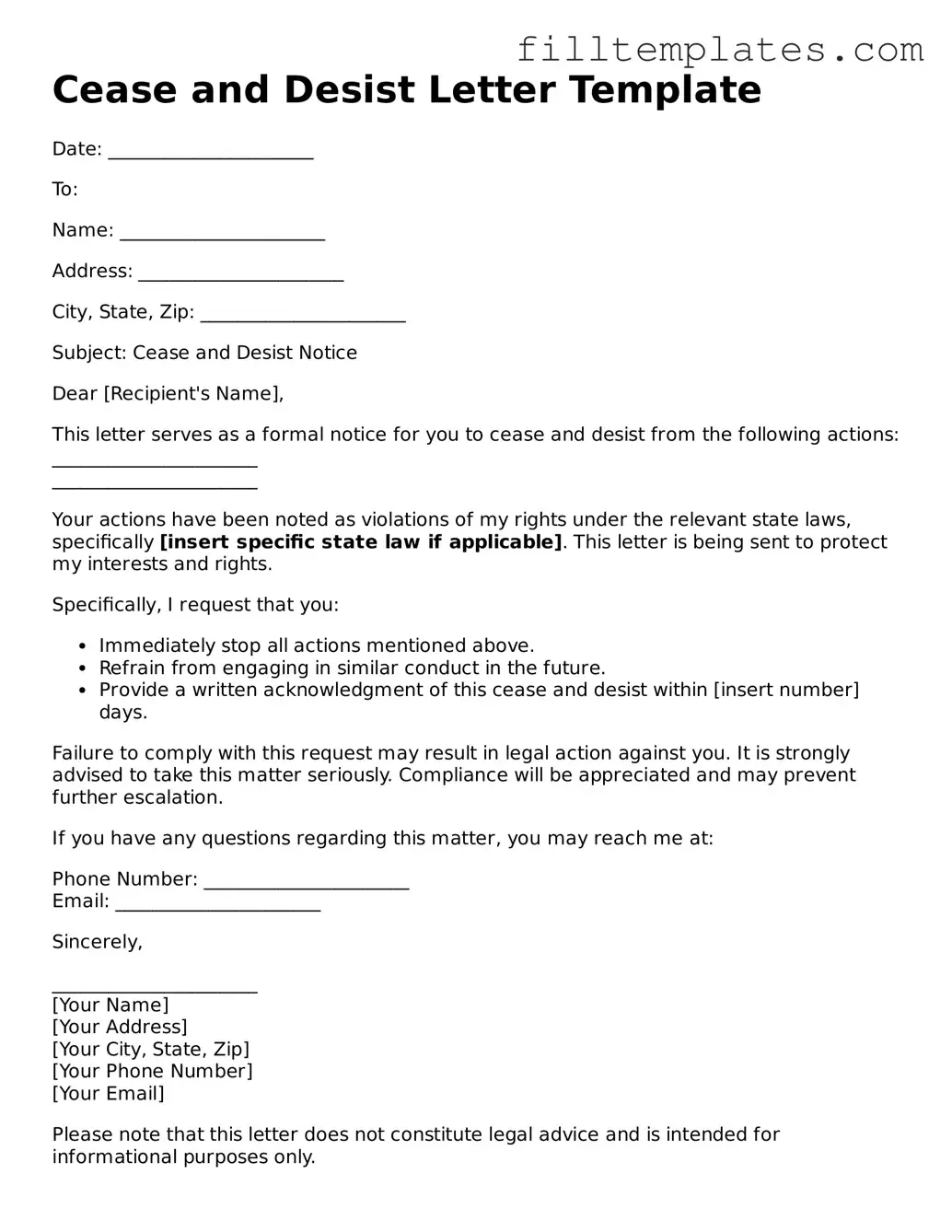Cease and Desist Letter Template
Date: ______________________
To:
Name: ______________________
Address: ______________________
City, State, Zip: ______________________
Subject: Cease and Desist Notice
Dear [Recipient's Name],
This letter serves as a formal notice for you to cease and desist from the following actions:
______________________
______________________
Your actions have been noted as violations of my rights under the relevant state laws, specifically [insert specific state law if applicable]. This letter is being sent to protect my interests and rights.
Specifically, I request that you:
- Immediately stop all actions mentioned above.
- Refrain from engaging in similar conduct in the future.
- Provide a written acknowledgment of this cease and desist within [insert number] days.
Failure to comply with this request may result in legal action against you. It is strongly advised to take this matter seriously. Compliance will be appreciated and may prevent further escalation.
If you have any questions regarding this matter, you may reach me at:
Phone Number: ______________________
Email: ______________________
Sincerely,
______________________
[Your Name]
[Your Address]
[Your City, State, Zip]
[Your Phone Number]
[Your Email]
Please note that this letter does not constitute legal advice and is intended for informational purposes only.
